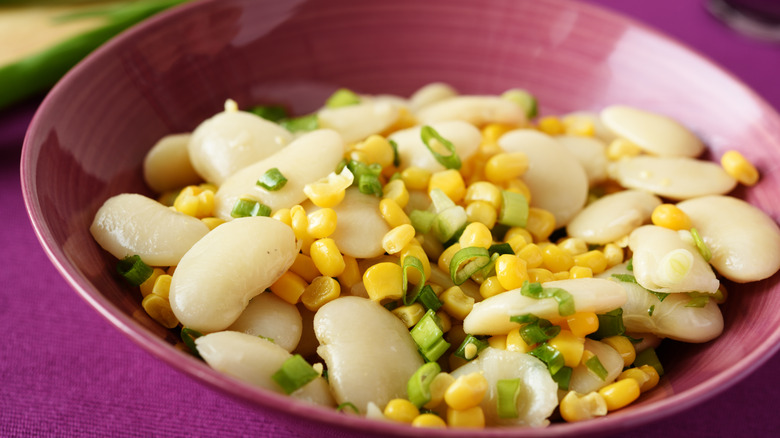Are Butter Beans And Lima Beans Interchangeable?
Depending on where you live or have traveled in the United States, you have probably come across a similar-looking type of bean that goes by different names. Some regions may call these legumes butter beans and others might refer to them as lima beans.
Butter bean is a term that you are more likely to come across in the South, while the lima in lima beans describes where it originated — in Lima, Peru. However, these beans are found in kitchens and on menus across the U.S. Butter beans are typically white and lima beans generally are a pale green. Both are better suited to being cultivated in warmer climates and each grows seeds that can be used in cooking as a standalone side or incorporated into a variety of dishes. And, in case you were wondering, you can't eat their pods. But are butter beans and lima beans interchangeable?
Same bean, different names
Lima beans and butter beans are the same, as they are both seeds derived from the Phaseolus lunatus plant. Though they are sold at different stages of maturity in supermarkets and farmer's markets (think baby lima beans) each is a legume that simply goes by a different name. The size of the bean and geography can impact the moniker used. According to The Gardener's Path, the British typically refer to the larger beans as butter beans, while people residing in the Southern U.S. might describe the bigger seeds as limas and the smaller ones as butter beans.
There are several other name variations in addition to lima and butter beans as well. Sieva or Carolina beans are two more appellations you might hear in the South. Some gardeners use the catchall term Madagascar beans to classify any type of lima. They may also be known as butter peas or gigante beans. Whatever you like to call butter/lima beans, just remember that it's all a matter of personal preference. You're still eating the same vegetable.

